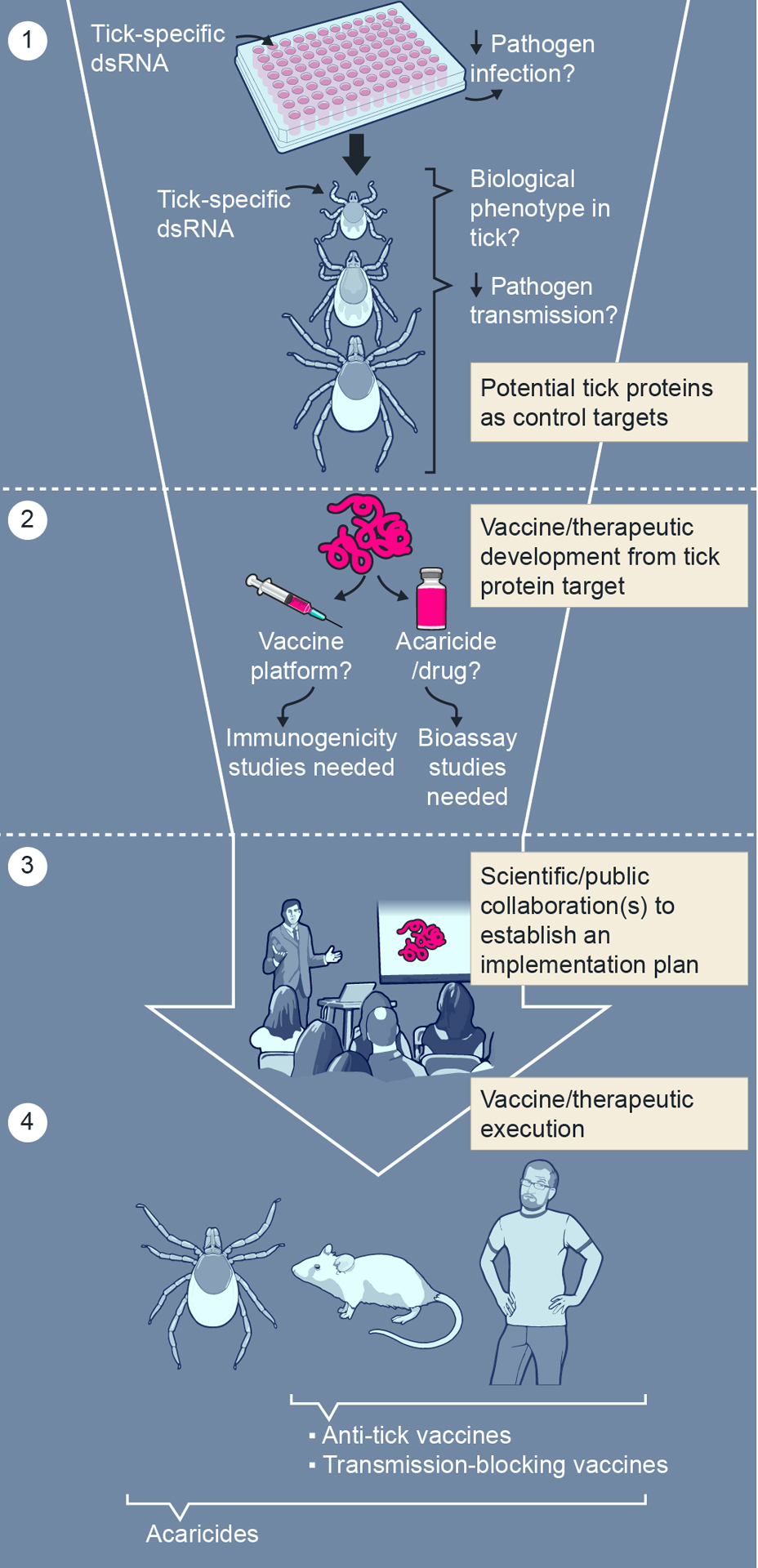Figure 2.

From basic research to design and implementation of tick-specific products to reduce tick-borne infectious disease. (1) RNA interference-mediated transcript knockdown with dsRNA specific to tick gene transcripts (tick-specific dsRNA) in tick cells, organs and ticks can provide functional effect on tick biology and tick-borne pathogen infection. From these findings, selected candidate tick genes need to be verified via tick-mammal infection and transmission studies before (2) product design and production efforts can be accomplished. (3) Design and implementation of prevention and therapeutic plans targeting tick-borne disease are required between scientists and the public before (4) tick control products, such as anti-tick vaccines, transmission-blocking vaccines and acaricides, can be utilized.
